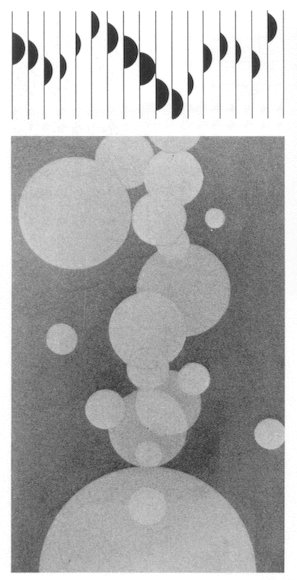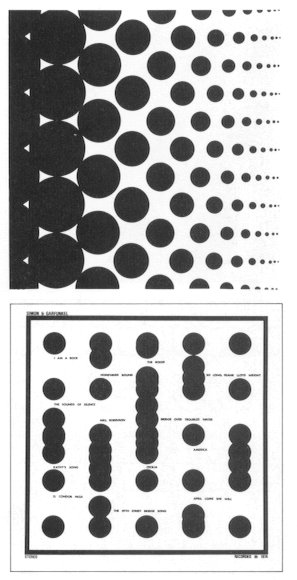|
(4) Rhythm and arrangement When I investigated the contents of rhythm, various types were found. Up to the previous page, configurational elements composing rhythm have been categorized and investigated. Then, the influence of the natures of configurations to the contents of the rhythm were studied. Since rhythm is largely related to "configurations", these will also be summarized in a simple way. First, more activated rhythms are felt if an arrangement
with freedom is used rather than that with equal distance or the same spacing,
and if oblique direction rather than vertical or horizontal directions
is used. As stated in the beginning of the book, rhythm is significantly
related to the cause of movement since it is one of the methods used to
express a feeling of movement. However, completely optional and free methods
are not always useful. Some order is necessary to create rhythms that have
beautiful, decent, elegant, fine feeling, and so on. The KOHSEI (Basic
Art & Design) are sometimes easy to understand like a fixed form of
verse, while they sometimes emphasize inner rules like free verse. In any
case, the nature of rhythm is to obtain a feeling of unity and life by
repetition.
|

